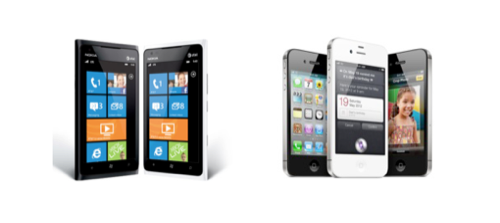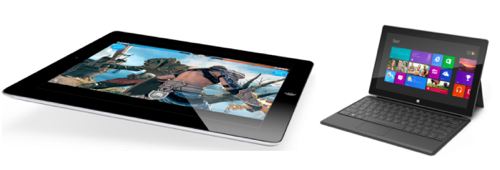
On Monday, a key Apple executive revealed why Microsoft’s Windows Phone designs don’t mimic the iPhone: because Microsoft is contractually prevented from doing so.
According to reports from The Wall Street Journal, Reuters, and others, Microsoft was one of the only companies to license the few, prized Apple design patents at stake in the ongoing trial between Apple and Samsung.
That trial will determine whether or not Samsung illegally copied the design of Apple’s phone technology. Apple rested its case on Monday, after accounting expert Terry Musicka was called to the stand to defend Apple’s damage claims. Those claims stand at between $2.5 billion and $2.75 billion, according to an InformationWeek report that claims that Apple suffered a significant loss in potential revenue when Samsung allegedly designed phones that mimicked Apple’s in several respects.
Apple has cross-licensed or licensed its technical patents before. But Apple patent licensing director Boris Teksler told the court last week that he could “count on one hand” the number of times Apple had licensed its prized “unique user experience” design patents, the heart of Apple’s case. And, he revealed Monday, one of those companies was Microsoft.
No Cloning Allowed
But the patents came with a major catch: an anti-cloning stipulation. “There’s a clear acknowledgement that there is no cloning as part of this provision,” Teksler said, according to the Journal. “There was no right with respect to these design patents to build clones of any type,“ Teksler said, Reuters added.
Unfortunately, the court (and therefore the world) was not told what patents Microsoft has access to, and how exactly Microsoft was barred from using the exact technology it licensed. But as blogger Florian Mueller noted, Apple values its design patents far more highly than the technical patents at issue in the case. In fact, Apple has claimed that it lost $2.02 in per-unit royalties for the “overscroll bounce” ‘318 patent, $3.10 for the scrolling API ‘915 patent, and $2.02 for the “tap to zoom and navigate” ‘163 patent. But Apple places the value of its design and trade dress patents at a whopping $24 per device.
Microsoft hasn’t announced any licensing agreement with Apple, not surprising when dealing with a company that prevents a “captive supplier,” Cirrus Logic, from even talking about its relationship with Apple, its largest customer, in earnings-related conference calls with Apple. And the relative size of both Apple and Microsoft would make a federally mandated disclosure of such a deal (required only if it would have a materially significant effect on revenue) unnecessary, and let it be quietly buried. Besides, there’s nothing saying that Microsoft paid cash for Apple’s design patents; the agreement could have been dealt with as a patent swap, with a relatively equal value to both.
Why Bother? Protection!
The question that this leaves unanswered, however, is why Microsoft would license patents it would be contractually barred from using (at least in some ways). The most likely scenario is that the patent licenses provide a “safety net” to indemnify Microsoft in case it wished to incorporate elements that could be disputed, such as the “click to zoom and navigate” patent referred to above.
“It’s a little bit complicated here, because the design patent to some extent is embraced in the concept of cloning,” said Neil Smith, a partner with Ropers Majeski Kohn & Bentley in San Francisco, a law firm with more than 25 years of experience intellectual property law. “I’m not exactly sure what they mean by cloning. It’s not improper to have reasonable restrictions to relate to protecting intellectual property in a license agreement and restricting a licensee more than the licensee would have the right to do otherwise. So there is intellectual property involved in the cloning aspect, whether that’s software or trade dress or advertising or whatever.”
Microsoft may have licensed the patents as a defensive measure, Smith noted. From Apple’s standpoint, he added, licensing patents adds some validity to them.
It seems clear, however, that Microsoft deliberately struck out on a divergent mobile path to differentiate itself from the field, including Apple. Many of the elements Microsoft adopted, from the Metro/Windows 8 typeface and design, the “live tiles” or widgets that continually update, the “charms,” as well as the Windows “home” button (as opposed to the iPhone’s square home button) seem like relatively original ideas. It’s hard to imagine that Microsoft senior executives had to do much to convince Teksler, Apple chief executive Tim Cook, or other executives that they had no desire to piggyback on the iPhone design.

Even using the Microsoft Surface tablet feels radically different than working with the iPad; Microsoft’s Surface has adopted the swipe as one of its main navigational tools. Users scroll the home screen sideways to access more content on its bright, lively screen. With the iPad, users tend to drill down through the cooler, calmer iPad interface, through a series of folders and icons.
Patents aside, there are reasons to adopt common design elements. But Microsoft and Apple have apparently achieved something that has become increasingly unusual in the world of mobile and smartphone technology: detente.




















